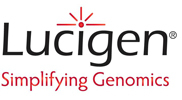
OptimizedforcloningtoxicorunstableDNA
 StABIlizetoxicinsertsincommoncloningandexpressionvectors(pUCandpET-typevectors)
StABIlizetoxicinsertsincommoncloningandexpressionvectors(pUCandpET-typevectors)- Cloneandmaintainchallengingsequencesatreducedplasmidcopynumber,theninducetohighcopynumberforDNArecovery
- AvoidT1andT5phagecontaminationwithtonAmutation
- Choosechemicallycompetentcellsforgeneralcloningorelectrocompetentcellsfordemandingapplicationssuchaslibrarygeneration
Applications
- CloningofunstableDNAsequencesorthoseexpressingtoxicproteins.
CopyCutter™EPI400™E.coli*cellsweredevelopedtosignificantlylowerthecopynumberofawidevarietyofcommonvectorssothatyoucanmorereADIlycloneunstableDNAsequences.DNAthatisunstableathigh-copynumberoftencodesforaproteinthatinhibitscellgrowthorcontainsAT-andGC-richsequencesorsequenceswithstrongsecondarystructure(Fig.2).1
TheCopyCutterEPI400celllinewasderivedfromEpicentre'shigh-transformationefficiencyphageT1-resistantTransforMAX™EC100™-T1RE.colistrainbymanipulatingagenethatcontrolsthecopynumberofvectorscontainingColE1orpMB1originsofreplication(e.g.,pUC-andpET-typevectors).Thisconstitutivelyexpressedgene,pcnB(plasmidcopynumber),wasdeletedfromtheTransforMAXEC100strainandreplacedwithamodifiedpcnBgenethatislinkedtoaninducIBLepromoter,creatingtheCopyCutterEPI400strain.
ThecopynumberofColE1-typevectorsintheCopyCutterEPI400straincomparedtotheparentalTransforMAXEC100strainisapproximately4-to25-foldlower,dependingonthevector.Moreover,ashortincubationinthepresenceoftheCopyCutterInductionSolutioncanincreasethecopynumberofthevectortoimproveplasmidyields(Fig.3).

Figure1.Copy-numberofColE1-typeplasmidsisloweredupto25-foldinCopyCutter™EPI400™E.colicells.LanesC,TransforMax™EC100™cells;LanesUandI,uninducedorinducedCopyCutterEPI400cells.DNAextractsfromthesamenumberoflysedcells(basedonOD600)wereloadedperlane.
 |  |
| Figure2.DNAinsertsencodingtoxicgeneproductsweresuccessfullyclonedintohigh-copy-numbervectorsusingCopyCutter™EPI400™E.colicells.Aftersequencing,thefull-lengthacpPclonesinTransforMAX™EC100™cellswerefoundtocontainmultiplepointmutations. | Figure3.UninducedCopyCutter™EPI400™E.colicellscontainingaregBclone(laneU)areinducedtohigher-copynumber(laneI)usingtheCopyCutterInductionSolution.CrudeextractsofplasmidDNAwerepreparedfromcellsgrowninselectivemediaandanalyzedbyagarosegelelectrophoresis.Approximatelythesamenumberoflysedcells(basedonA600)wereloadedperlane. |
Benefits
- Maintainclonesatlow-copynumber,theninducetohighercopynumberforimprovedplasmidyield.
- Hightransformationefficiencywithclonesofallsizes.
- tonAforresistancetobacteriophagesT1andT5.
- lacZΔM15forblue/whitescreeningofrecombinants.
- Restrictionminus[mcrA,Δ(mrr-hsdRMS-mcrBC)]genotypeenablesefficientcloningofmethylatedDNA.
- Endonucleaseminus(endA1)toensurehighyieldsofDNA.
- Recombinationminus(recA1)forgreaterstabilityoflargeclonedinserts.
Genotype
F-mcrAΔ(mrr-hsdRMS-mcrBC)Φ80dlacZΔM15ΔlacX74recA1endA1araD139Δ(ara,leu)7697galUgalKλ-rpsL(StrR)nupGtrfAtonApcnB4dhfr
CopyCutterEPI400ElectrocompetentE.coli
- Transformationefficiencyof>1x1010cfu/µgofpUC19.
CopyCutterEPI400ChemicallyCompetentE.coli
- Transformationefficiencyof>1x107cfu/µgofpUC19.
Reference
- Haskins,D.(2004)EpicentreForum11(5),6.
*Coveredbyissuedand/orpendingpatents.
ORDERINFORMATION
Tentubeseachcontaining50µLofcells(enoughcellsfor10transformations),CopyCutter™InductionSolutionandpUC19controlDNA.TheCopyCutter™InductionSolutionisprovidedata1,000Xconcentrationandisfiltersterilized.ebiomall.com






>
>
>
>
>
>
>
>
>
>
>
>
科学家发现,细菌在遭遇噬菌体等病毒侵染之后,可以获得其部分DNA(脱氧核糖核酸)片段并整合进基因组形成记忆,当再次遭到入侵时,转录出相应的RNA(核糖核酸),利用其中的“定位信息”引导Cas蛋白复合物定位和切割、彻底地摧毁入侵病毒的DNA。CRISPR/Cas9技术就是利用这一原理,用一种定制的RNA引导Cas,对预设DNA位点进行切割,造成DNA断裂,启动细胞内基因组修复机制,实现基因敲除、特异突变的修复或引入和定点转基因等。
类,其中Ⅰ类和Ⅲ类需要多种CRISPR相关蛋白(Cas蛋白)共同发挥作用,而Ⅱ类系统
只需要一种Cas蛋白即可,这为其能够广泛应用提供了便利条件。
目前,来自Streptococcuspyogenes的CRISPR-Cas9系统应用最为广泛。Cas9蛋白(含
有两个核酸酶结构域,可以分别切割DNA两条单链。Cas9首先与crRNA及tracrRNA结合
成复合物,然后通过PAM序列结合并侵入DNA,形成RNA-DNA复合结构,进而对目的
DNA双链进行切割,使DNA双链断裂。
由于PAM序列结构简单(5’-NGG-3’),几乎可以在所有的基因中找到大量靶点,因此得到广泛的应用。CRISPR-Cas9系统已经成功应用于植物、细菌、酵母、鱼类及哺乳动物细胞,是目前最高效的基因组编辑系统。
是不是CRISPRall-in-one只能设置一个sgRNA?
http://www.nature.com/nature/journal/v520/n7546/full/nature14299.html
缺点:质粒仍然较大,转染难度相对较大。具有碱基识别偏好性,局限了基因编辑的运用范围,而且会导致不同基因位点编辑效率不同。筛选仍然需要较大工作量。
通过敲除来研究基因的功能,所谓的敲除不外乎有三种情况:1)单交换插入抗性基因使原基因失活;2)抗性基因双交换替换掉原基因;3)同框缺失即完整的使原基因敲除掉。
第三种情况得到的突变株比较好但筛选工作量很大,前两种情况因为插入了抗性基因比较好筛选突变子,但是由于外源的插入了抗性基因容易引起polar effect,所以拿到突变株后要做回补实验来排除是由polar effect引起的,如果是第三种情况得到的突变株不做回补也没关系,做了会更好。
CRISPR/Cas9作为一种基因敲除工具来说,比现有的基因敲除工具cre-loxpsystem,它的优越性在哪儿,有没有大神可以告诉我一下,感谢!感谢!
我想问一个基础问题啊,用CRISPR/cas系统敲除某个基因后,如果突变株表型没法通过肉眼分辨,怎么把突变株找出来?要用到什么Marker吗?还是需要对细胞逐个测序检测?
如果是逐个检测,那就涉及到效率问题了,当效率比较低的时候,岂不是工作量很大?
还有cas9基因会残留在细胞里吗?









